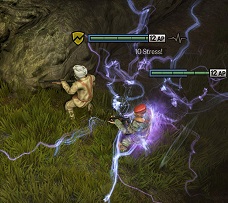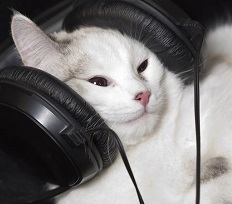What is Media Ecology? (A Short Answer)
Following on from my earlier discussion on Media Ecology as part of a talk a Goldsmiths, I want to return to the subject. At the start of February 2011 the Noika boss Stephen Elop posted a 1,300 word memo to the rest of the staff stating frankly why Noika was in trouble in the smart phone war. They had lost their mojo to Apple and Google and were struggling to get it back. For me, one of the notable things about this memo is the use of the term ‘ecosystem’ when referring to the natural world, but of the world of technology. Here’s an example:
The battle of devices has now become a war of ecosystems, where ecosystems include not only the hardware and software of the device, but developers, applications, ecommerce, advertising, search, social applications, location-based services, unified communications and many other things. Our competitors aren’t taking our market share with devices; they are taking our market share with an entire ecosystem. This means we’re going to have to decide how we either build, catalyse or join an ecosystem.
He uses the term a lot in the memo. Now why would a memo talking about manufactured plastic objects, which if anything are helping to degrade the natural ecosystem, use a term from ecology? Why? Because we’re in the age of Media Ecology.
So what is Media Ecology and why are we in its age? Put simply, its a way of understanding the media that surrounds us where the focus is as much on the connections between things as on the things themselves. Here is Fuller (2005) and his illuminating discussion of why he uses the term ‘ecology’ in his book ‘Media Ecologies‘;
The term ‘ecology’ is used here because it is one of the most expressive language currently has to indicate the massive and dynamic interrelation of processes and objects, beings and things, patterns and matter….The term ‘media ecology’ is used and in circulation in a number of ways. The term is chosen here because this multiple use turns it into a crossroads: Putting these two words next to each other produces a conjunction of two variables that are always busy with meaning. Their dynamism, however, always arises out of concrete conditions. The virtuality of such conditions, their possible reinvention or alternative state, their pregnancy with change and interrelation, is as deeply implied in this concreteness as much as it can be said to be subject to definition. (Fuller 2005:2-3)
Think of a newspaper – a physical object. It is produced by an interlinked set of operations from the manufacture of paper, to printing to the writing of what will be printed, to distribution to each individual buyer. While Media Studies may have focused what was being written in the paper and who was reading it, there is still a complex web of interactions going on. Why is Media Ecology of such interest now? When you look at a networked form of media such as a website, the complex web of interactions gets even more complex. We don’t have the paper but we do have the computer hardware and software both running the site and being used to make the site and by users to read the site. Users are not passive end-entities in this; they can be active in commenting, blogging, re-blogging, tweeting and the like. The complex web get even more, well, complex.
Biology developed a set of tools for looking at complex interactions. Tools for how they interact; ecology. Tools for how they change (and are changed) by each other and the environment; evolution. (Which is why my research looks at technology and evolution). As a Media Ecologist I seek to use those tools and ideas to understand why the situation that Nokia finds itself in is about ecosystems. Here’s two parallel examples of this in play – an Oak tree and Twitter. An Oak tree is a large organism, it has aggregated during it’s growth quite a lot of biomass. As it’s life cycle proceeds from day to day, it creates its own ecosystem around it. Dead leaves that fall, shelter for small mammals and so forth:

Ecosystem of an Oak Tree
But the relationship between the tree and those that live within its ecosystem is not always benign – its complex. So yes the organisms that consume the dead leaves contribute nutrients to the soil the tree lives within. The squirrels disburse its acorns allowing it to spread its seed. However the shade the tree creates (and other processes in its biology) stop competitors from growing within its sphere – including competitors from its own acorns.
Now Twitter. Recently Twitter made news by shutting down some 3rd-party systems. Many commentators cired foul.
UberMedia, after getting its popular UberTwitter and other mobile social media apps shut down Friday by Twitter for alleged terms of service breaches, is reportedly changing its name to UberSocial as part of its effort to meet Twitter’s terms. Twitter says it suspends “hundreds of applications” that violate its privacy and other API policies, but it was the microblogging site’s suspension of the popular UberMedia UberTwitter, UberCurrent and twidroyd apps that sparked a big social media to-do.
But when you look at it though a Media Ecology prisim, you can see it is netiehr right nor wrong. It just is. Like an Oak tree it has accumulated a lot of mass. In this case digital. Its mass and the platform it provides gives a home to many small entities to live within its branches. Many of these relationships are co-operative, but on a scale of bio-data-mass. Twitter benefits from those making Twitter a more attractive place to exist and many also add content to Twitter (adding to its data-mass). But it also ensures that those it offers shelter too, don’t impinge on its core processes. Here’s how the Twitter Ecosystem looks:






Trackbacks